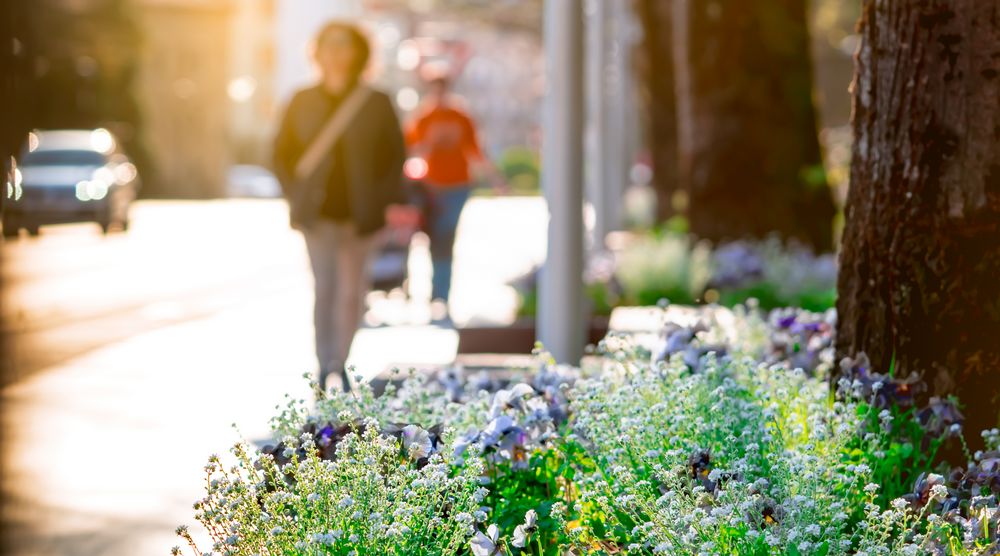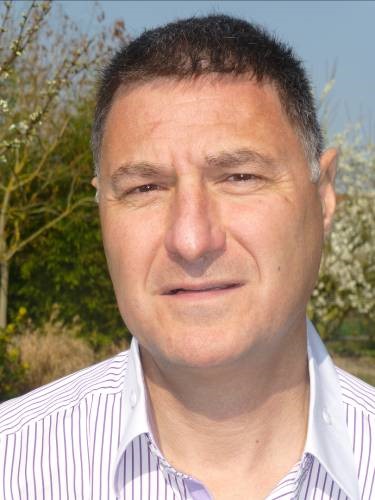How to manage an urban greening project in your town?
Hortis ambassador Stéphane Delavallade created a 13-step method to assist public authorities with urban greening projects.

Until 2020, Stéphane DELAVALLADE was vice-president of Hortis and today is an ambassador for the association. He is an expert in the environment, ecology and biodiversity, a trainer at the CNFPT and knows everything there is to know about the problems of urban greening and vegetalization on the outskirts of urbanized zones. He has invented a 13-step method to assist public authorities with their green heritage development projects like rehabilitating brownfield sites, developing their local plant heritage and adopting sustainable green space management practices. Mr. DELAVALLADE explains the broad outlines of these steps below.

A methodological approach applicable to all urban greening projects
This approach is for multiannual urban greening programs and the requalification of public spaces based on the needs and uses of local inhabitants. It has three objectives:
- reinforce the resistance of the zone to climate change;
- improve air and landscape quality;
- reduce power consumption in the zone.
The method is divided into 13 steps, ensuring public authorities do not forget to monitor ongoing projects – it is equally applicable to urban, rural, agricultural and brownfield areas.
- Resituate the town in its historical and geographical context
- Find a theme idea which characterizes the community
- Use the local public and private plant and aquatic heritage
- Define and prioritize the territory’s main biological systems
- Define the threats to the public and private spaces in these main biological systems.
- Define an action plan for each biological unit
- Connect natural spaces to each other
- Adopt a sustainable space management plan
- Adapt existing buildings for small fauna and flora
- Apply the Environmental Approach in Town planning (a French method for integrating environmental considerations into the planning process) to new urban areas
- Integrate run-off water management
- Create a management committee composed of local citizens and territorial leaders
- Carry out an ecological diagnosis, implement works which consolidate the potential identified and communicate and educate about the urban greening project and the environment in general.
This approach also makes it possible to obtain coveted certifications, like the French national “Villes et Villages Fleuris” label or the French regional “Commune Nature” label which opens the door to subsidies as well as improving a territory’s attractiveness.
Key role plants play in boosting tourism attractiveness
A recognized specialist in this method, Stéphane DELAVALLADE answers some of our questions.
Mr. DELAVALLADE, can you explain the different levels that make up the biology of a territory?
 Stéphane DELAVALLADE: From the broadest overview to the most local, they are always the same – the regional green level, the level in which people travel and finally the green proximity level.
Stéphane DELAVALLADE: From the broadest overview to the most local, they are always the same – the regional green level, the level in which people travel and finally the green proximity level.
The regional green level makes it possible to identify the main regional units in which species can complete all the phases of their life cycles as well as the corridors which connect them together. Here you can find the blue pattern of moist environments and the green pattern made up of several under-patterns, like open lands and forest zones.
The green level related to infrastructures designed for travel (roads, railroads…) supplements the first level, making it possible for species to return to the regional green level. The idea is to use these infrastructures present everywhere throughout the territories, in the countryside as well as in urban areas (trees along the roads, along streets downtown and associated vegetation for example) to develop corridors of biodiversity along the roads, railroads, canals, etc. Some corridors are already well defined, others need to be built or rebuilt and where possible should integrate cycle lanes.
Read also: When landscaping and transport networks join forces
Last but not least, the green proximity level groups together the entire local plant heritage and adopts a societal dimension. Downtown, the plan is to develop highly vegetalized, safe pathways to facilitate access to green spaces and so that children can go to school without walking on busy highways. The plan must also address the management of this heritage: for example, by respecting the shape of trees during pruning, cutting shrubs as little as possible and diversifying species to avoid epidemics. In the country, paths along fields could be used after agreement with the owners by walkers and joggers. These paths can also be vegetalized with species attractive to animals, in particular to pollinating insects. These principles also apply to the green level related to infrastructures designed for travel.
You tell us to apply the principles of sustainable green space management. How can we do this?
Stéphane DELAVALLADE: The idea is to adopt a management plan which respects the physiology of the plants and enables the expression of biological diversity. For example, a few years ago, we used to mow 15 to 20 times/year. This frequency does not permit true plant diversity on the ground! We need to “renature” spaces by recreating all the layers that used to exist in nature and thus reconstitute a habitat accessible to animals.
But there is no point in doing that if the spaces are lit all night continuously as that would prevent biological life from thriving. There are, of course, safety and visibility requirements, but do we really need public lighting which lights the sky, as is the case with bowl-shaped standard lamps? To create this blackness, we need to modernize lighting hardware and position standards further apart - reducing energy costs for the community. But never forget that people are frightened in the dark so you have to find solutions that everyone agrees on.
How do we get the public to approve urban greening projects?
Stéphane DELAVALLADE: From the outset, you have to involve the locals as active participants in the project. You can organize events to show where the public authorities want to go, explain why mowing will be less frequent and trees and shrubs allowed to spread, create plant recognition contests, set up a local astronomy club related to improved vision of the sky at night due to the drop in urban lighting – and propose nighttime outings to discover bats… It is essential to use resourceful locals to run these groups.
When you get involved in long-running urban greening projects like that, you can meet opposition. You have to have a clear objective and a story to tell. This means putting things in perspective, finding a theme and getting people excited about what you are doing.
How can the Hortis association help public authorities interested in your method?
Stéphane DELAVALLADE: Contact us for more information about this methodological approach, as well as the public authorities with whom we are already working closely. Towns can also suggest that their park managers join the Hortis association. We have also opened our membership to “friendly” professions like landscapers, natural space managers, etc.
We also have a stand at Paysalia from November 30th to December 2nd, 2021 at Eurexpo-Lyon, France and will be present to answer all the questions public authorities may have about urban greening projects and sustainable management of their green spaces. We hope they will all come!
Our thanks to Stéphane DELAVALLADE for sharing his expertise.
© Photo credit: Artinun / Adobe Stock

